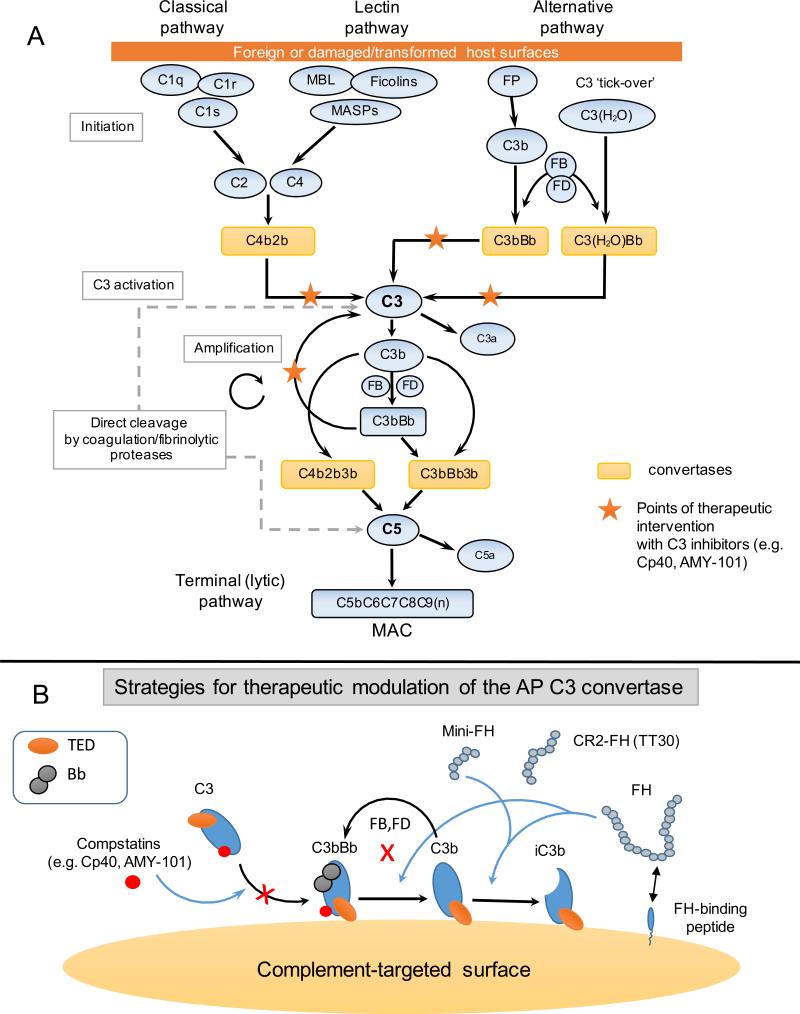Figure 1.
(Panel A) A simplified schematic overview of the complement cascade with points of therapeutic intervention by clinically developed C3 inhibitors. Complement activation on foreign surfaces (e.g. microbial, transplants, biomaterials) or damaged/transformed self surfaces can be triggered by any of the three pathways (classical, lectin, alternative). All pathways converge at the cleavage of the central component, C3, by the C3 convertases. Amplification of the AP is considered a pivotal pathogenic driver in many complement-mediated diseases. Activation of C5 by C5 convertases of both the classical and alternative pathway leads to the release of the proinflammatory mediator C5a and the assembly of the cell-perforating MAC (C5b-9). Convertase-independent cleavage of C3 and C5 by coagulation and fibrinolytic proteases (e.g. plasmin, thrombin) has been implicated as a bypass pathway of complement activation in certain pathophysiological contexts. C3-targeted inhibitors (e.g. Cp40, AMY-101) can provide effective and broad therapeutic control of the cascade by targeting all pathways at the level of C3 and blocking downstream complement effector responses (e.g. C5a generation, MAC assembly). Abbreviations: AP, alternative pathway; MBL, mannose-binding lectin; MASPs, mannose-binding lectin associated proteases; FP, properdin; FB, factor B; FD factor D; MAC, membrane attack complex.
(Panel B) Concepts and illustrative examples of C3-targeted therapeutic modulation. Several inhibitory approaches have been developed and are currently in clinical evaluation as C3-targeted therapeutics for various indications. These include: a) systemic or local complement modulation at the level of C3 (e.g. compstatin analogs), b) surface-targeting of fluid-phase complement regulators ( e.g. FH) acting at the level of the AP C3 convertase (e.g. mini-FH variants, CR2-FH fusion constructs:TT30) and c) targeting moieties that recruit endogenous C3 regulators to the complement-opsonized surface (e.g. FH-binding peptides, 5C6). Blue arrows indicate ways by which AP C3 convertase activity can be regulated by natural, chimeric or small-sized C3 inhibitors.

